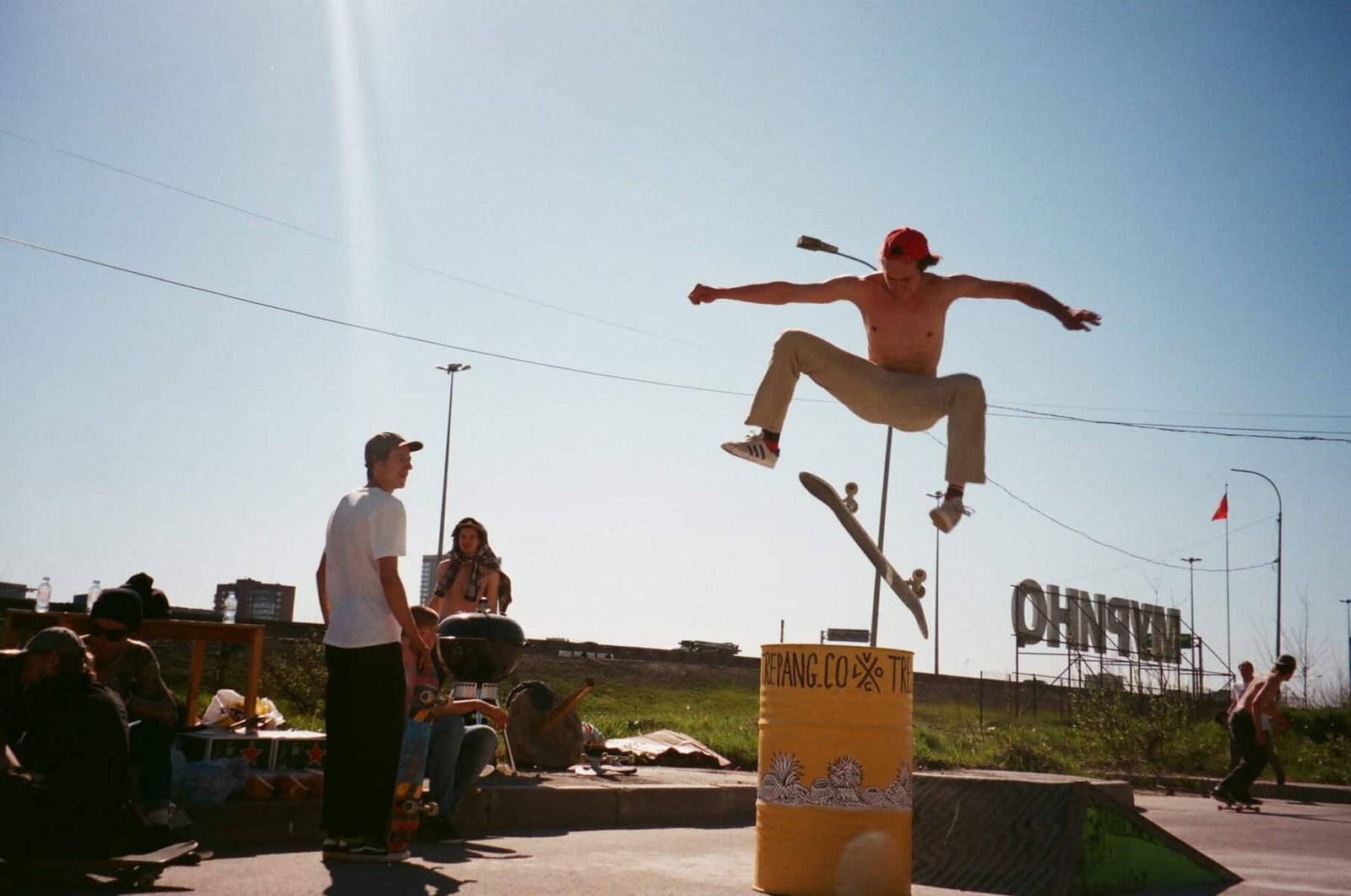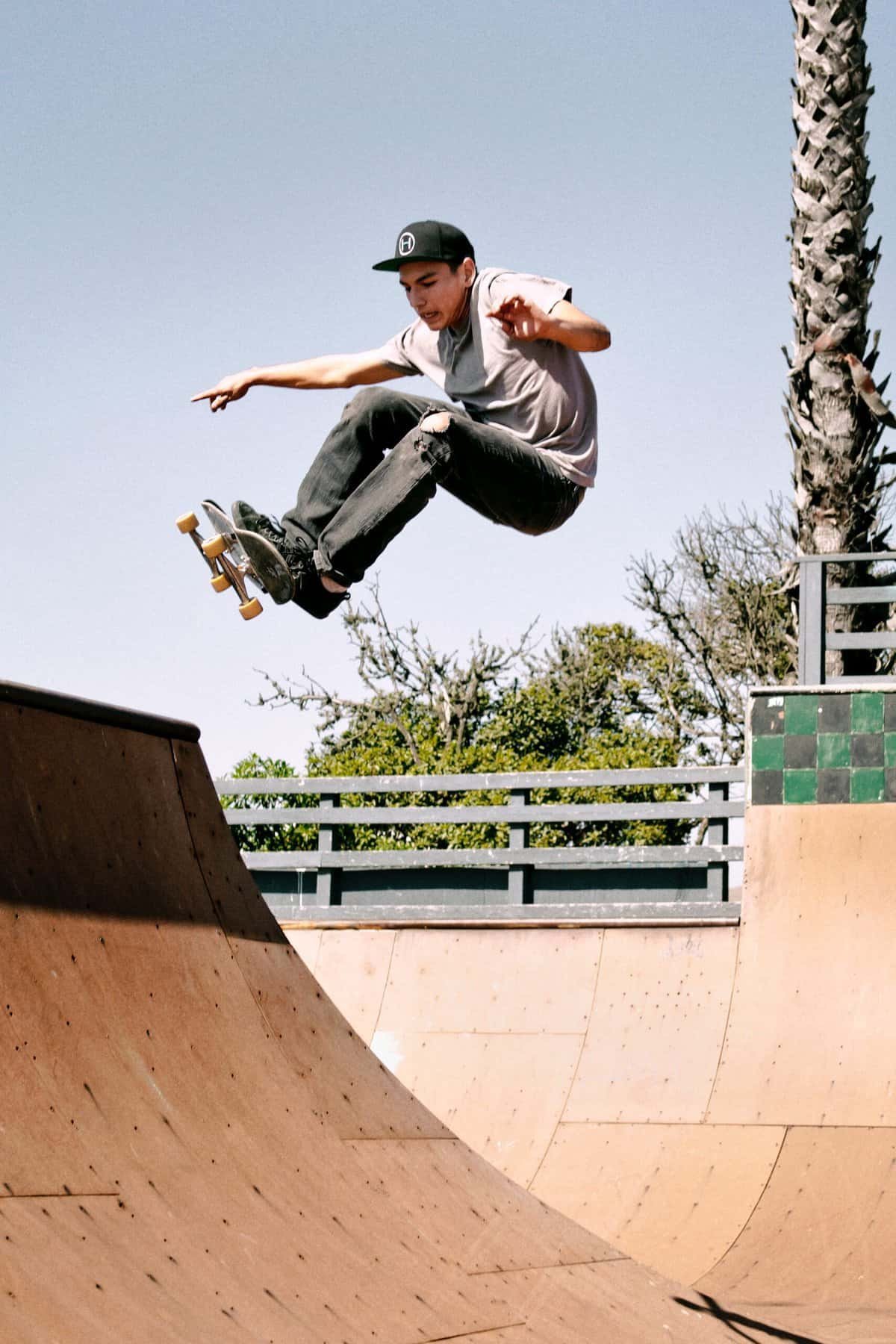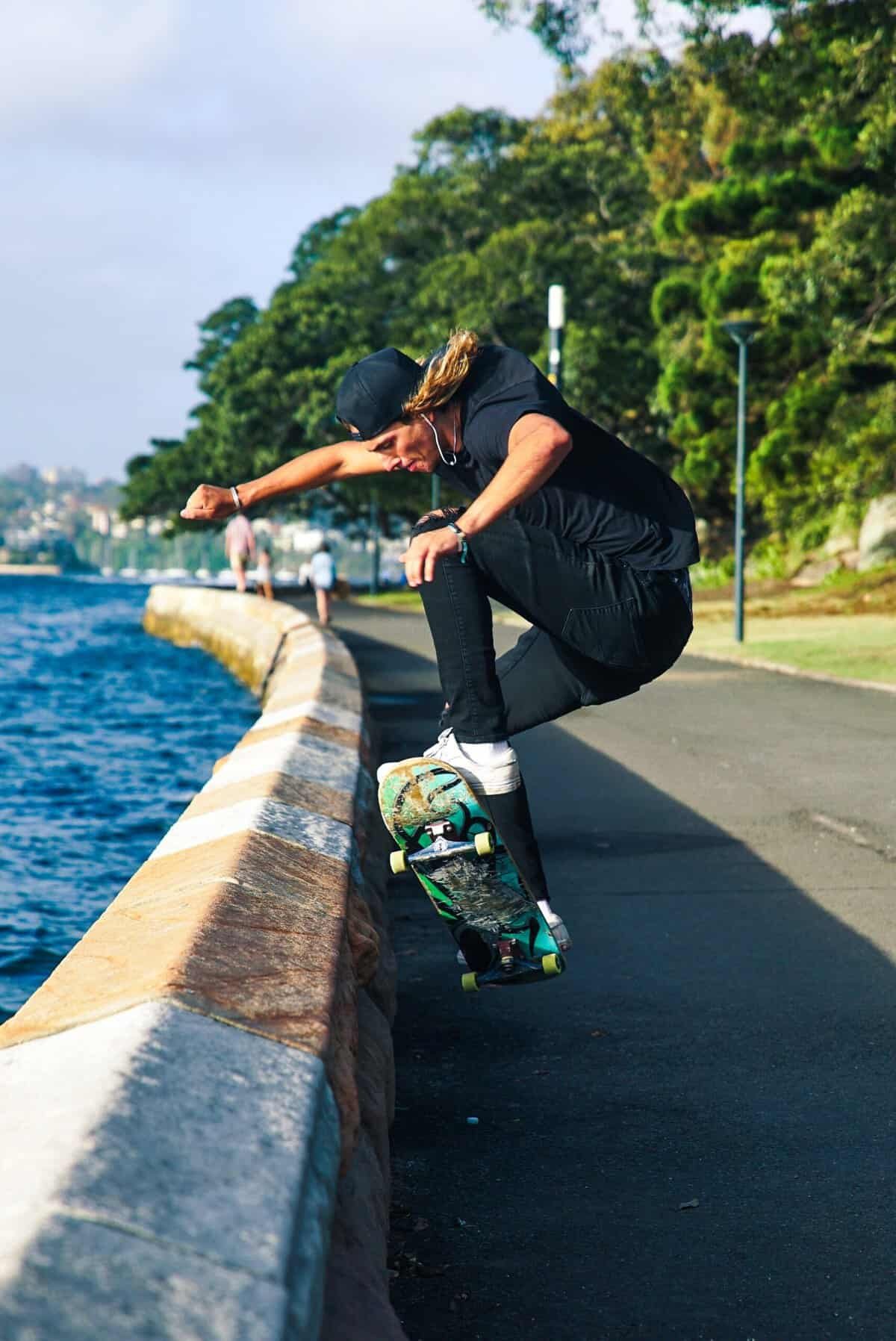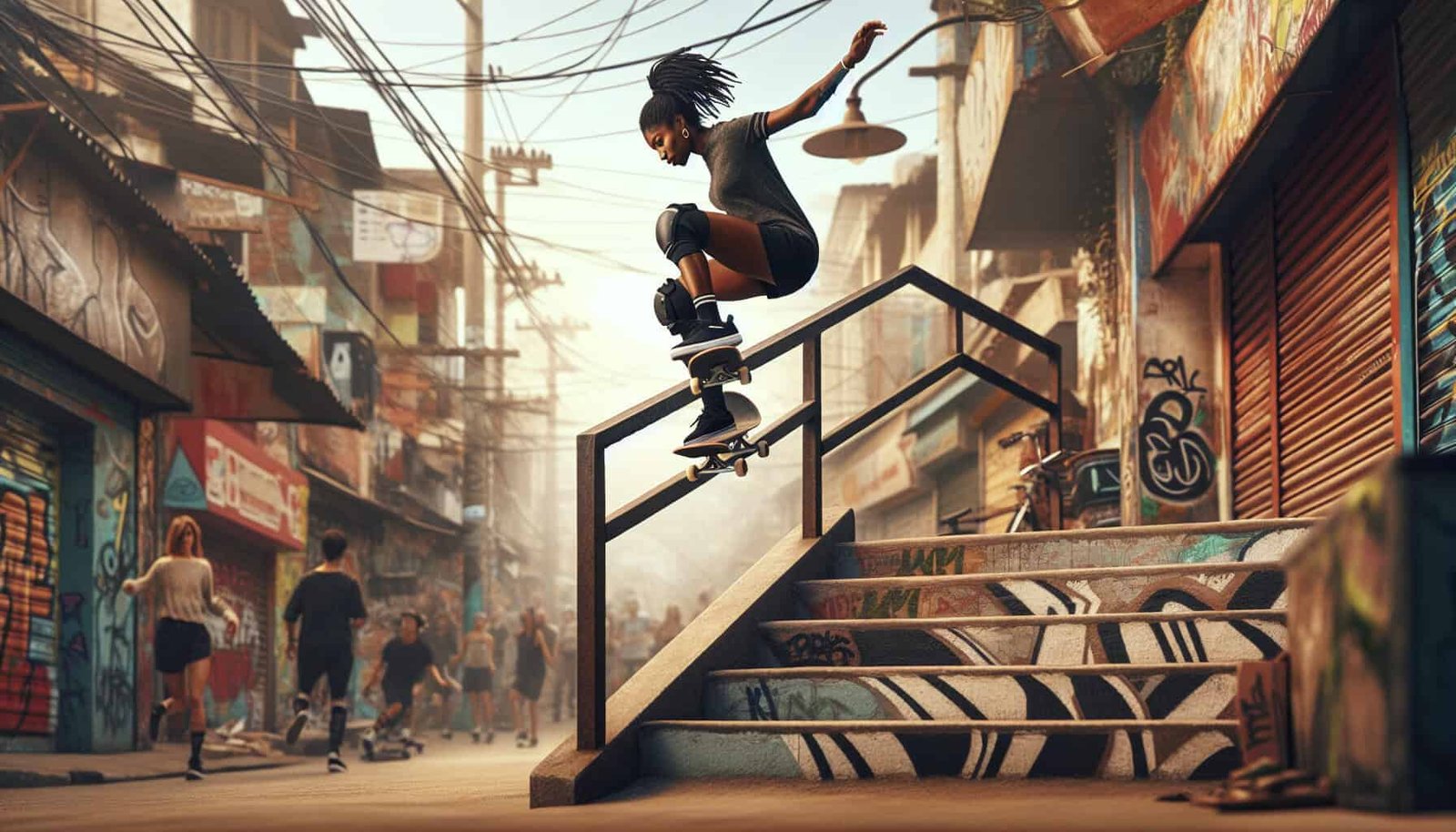Skateboarding is an exhilarating sport that thrives on pushing boundaries and defying gravity. Among the many awe-inspiring tricks skateboarders perform, handrail tricks have always captivated audiences with their audacity and skill. So, what exactly are the key elements that make these tricks possible? From perfecting balance and technique to harnessing fearless determination, this article will explore the essential components required to master the art of skateboard handrail tricks. Get ready to be inspired, as we unlock the secrets behind this thrilling aspect of the skateboarding world. Skateboard handrail tricks are an exciting and visually captivating aspect of skateboarding. They require a combination of technical skill, physical prowess, and mental focus. In this comprehensive article, we will explore the purpose of skateboard handrail tricks, the necessary skills and techniques, the essential equipment and safety measures, as well as the mental and physical preparation needed. We will also delve into the approach and execution of handrail tricks, different types of tricks, common challenges and mistakes, progression and advancement, injury prevention and recovery, and the importance of creativity and originality.

1. Purpose of Skateboard Handrail Tricks
1.1 Increase Difficulty and Style
One of the primary purposes of handrail tricks is to increase the overall difficulty and style of skateboarding. By incorporating handrails into their tricks, skateboarders showcase their ability to maneuver their boards in challenging and unconventional ways. These tricks elevate the level of skill required and add an element of excitement to the sport.
1.2 Showcase Technical Skills
Handrail tricks demonstrate the technical proficiency of skateboarders. These tricks often involve complex movements, precise timing, and advanced coordination. By mastering handrail tricks, skateboarders can impress their peers and gain recognition for their technical abilities.
1.3 Thrill and Adrenaline
Handrail tricks offer a unique form of thrill and adrenaline for skateboarders. The combination of speed, height, and the inherent risk of performing tricks on handrails creates an exhilarating experience. The adrenaline rush derived from successfully executing a handrail trick is a major motivator for many skateboarders.
2. Skill and Technique
2.1 Balance and Body Control
Maintaining balance and having excellent body control are essential skills for executing handrail tricks. Skateboarders must develop a strong sense of balance and be able to adjust their body position according to the rail’s shape and angle. Mastering balance and body control allows skateboarders to maintain control throughout the trick.
2.2 Speed and Momentum Management
Properly managing speed and momentum is crucial when performing handrail tricks. Skateboarders need to generate enough speed to clear the rail while maintaining control and stability. Finding the right balance between speed and control ensures a smooth execution of the trick.
2.3 Ollie and Pop
The ollie, the foundational trick in skateboarding, is a key element in most handrail tricks. It involves popping the skateboard off the ground while simultaneously sliding the front foot up the board. The ability to ollie efficiently and with precision is fundamental for performing handrail tricks.
2.4 Grabs and Tweaks
Adding grabs and tweaks to handrail tricks enhances style and creativity. Grabs involve reaching down and gripping the skateboard while in the air, adding an extra level of difficulty and visual appeal. Tweaks refer to manipulating the board’s position or shape during the trick, providing an additional element of personal expression.
2.5 Rotation and Flips
Incorporating rotations and flips into handrail tricks adds complexity and variety. Skateboarders can perform 180-degree or 360-degree spins, as well as flips like kickflips or heelflips, while navigating the rail. Proper execution of rotations and flips requires precise timing and coordination.
2.6 Slide and Grind
Sliding and grinding on the handrail is an integral part of many handrail tricks. Skateboarders need to master the technique of sliding or grinding the trucks (metal axles that attach the wheels to the skateboard) along the rail’s surface. Skillful sliding and grinding ensure a smooth transition across the rail and add an element of fluidity to the trick.
3. Equipment and Safety Measures
3.1 Skateboard
A suitable skateboard is a fundamental requirement for performing handrail tricks. Skateboards vary in size, shape, and characteristics, allowing riders to choose the one that suits their style and preferences. Skateboarders often prefer boards with a durable construction, appropriate concave (the curvature of the board), and a size that matches their personal preference.
3.2 Appropriate Shoes
Wearing appropriate skate shoes is essential for executing handrail tricks successfully. Skate shoes are specially designed to provide grip, durability, and stability when performing skateboarding maneuvers. They typically feature reinforced toe caps, grippy soles, and cushioning to absorb impact.
3.3 Protective Gear
Skateboarding, especially handrail tricks, poses inherent risks, making protective gear crucial for ensuring safety. Essential protective gear includes a certified helmet, knee pads, elbow pads, and wrist guards. Wearing the appropriate protective gear minimizes the risk of injury and provides skateboarders with the confidence to attempt challenging tricks.
3.4 Preparing the Handrail
Before attempting a handrail trick, it is important to ensure that the handrail is suitable and safe for use. Skateboarders must inspect the rail for any defects, such as sharp edges, loose bolts, or protruding objects. Removing any obstacles and ensuring a smooth, clean surface will reduce the risk of accidents and improve the overall skating experience.
4. Mental and Physical Preparation
4.1 Visualization and Focus
Mental preparation plays a significant role in successfully performing handrail tricks. Visualizing the trick in advance helps skateboarders understand the necessary movements and build confidence. Focusing on the present moment and eliminating distractions are vital for maintaining concentration during the trick’s execution.
4.2 Building Strength and Endurance
Handrail tricks require physical strength and endurance. Skateboarders should engage in regular strength and conditioning exercises, focusing on leg and core muscles that support stability and balance. Incorporating exercises such as squats, lunges, and planks into a training routine can enhance strength and endurance.
4.3 Practicing Basic Tricks
Mastering fundamental skateboarding tricks is an essential step in preparing for handrail tricks. Basic tricks such as ollies, kickflips, and board slides build a strong foundation and help skateboarders develop the necessary skills and muscle memory required for more advanced maneuvers.
4.4 Progression and Challenge
Progressing gradually and setting challenges for oneself is crucial in improving handrail tricks. Starting with smaller and less intimidating rails allows skateboarders to develop confidence while gradually moving on to larger and more challenging handrails. Frequent practice and pushing personal limits contribute to skill enhancement and overall progression.

5. Approach and Execution
5.1 Determining the Starting Position
Approaching the handrail from the correct starting position is crucial for a successful trick. Skateboarders must identify the ideal angle and distance to approach the rail, taking into account factors such as rail height, their speed, and the desired trick.
5.2 Speed and Momentum Generation
Generating the appropriate speed and momentum is essential for clearing the handrail effectively. Skateboarders must find the right balance between pushing off with sufficient force and maintaining control. The speed and momentum generated should allow for a smooth transition onto the rail.
5.3 Stance and Body Positioning
Proper stance and body positioning greatly influence the execution of handrail tricks. Skateboarders should align themselves parallel to the rail, ensuring their shoulders, hips, and feet are in the optimal position. Maintaining a centered and balanced stance throughout the trick enhances stability and control.
5.4 Commitment and Confidence
Handrail tricks require commitment and confidence. Skateboarders must fully commit to the trick, trusting their skills and instincts. Confidence in the approach, execution, and landing of the trick significantly increases the chances of success.
5.5 Precision and Timing
Executing handrail tricks with precision and impeccable timing is crucial. Skateboarders must time their ollies and movements to coincide with the rail’s position and their desired trick. The accuracy of these movements determines the smoothness and overall success of the trick.
5.6 Spotting the Landing
Spotting the landing is essential to ensure a smooth and controlled exit from the handrail. Skateboarders need to focus their gaze on the intended landing spot, allowing them to maintain balance and regain control upon completion of the trick. Spotting the landing enhances accuracy and reduces the risk of falls or accidents.
6. Types of Handrail Tricks
6.1 Frontside 50-50
The frontside 50-50 is a basic handrail trick where the skateboarder grinds the rail using both trucks. The rider approaches the rail at an angle and ollies onto it, sliding along with both trucks parallel to the rail.
6.2 Backside 50-50
Similar to the frontside 50-50, the backside 50-50 involves grinding the rail with both trucks. The skateboarder approaches the rail with their back to it and executes an ollie, landing with both trucks squarely on the rail’s surface.
6.3 Boardslide
A boardslide is a handrail trick where the skateboarder slides along the rail with the center of the deck, perpendicular to the rail’s direction. The rider approaches the rail at an angle, ollies onto it, and slides along using the bottom side of the board.
6.4 Lipslide
The lipslide is a more advanced handrail trick where the skateboarder approaches the rail at an angle and ollies onto it. Instead of sliding with the bottom side of the board like in a boardslide, the lipslide involves sliding using the griptape side of the board.
6.5 Smith Grind
The Smith grind is a handrail trick where the skateboarder grinds the rail using only the back truck. The approach and execution are similar to a frontside 50-50, but the back truck is dominant, sliding along the rail while the front truck is lifted slightly.
6.6 Crooked Grind
A crooked grind involves grinding the rail using the nose or tail of the skateboard. The skateboarder approaches the rail at an angle, ollies onto it, and slides with either the nose or tail, while the other end of the board is slightly lifted.
6.7 Feeble Grind
A feeble grind is a handrail trick where the skateboarder grinds the rail with the back truck, but the front truck is slightly lifted and hooked onto the rail. The approach and execution are similar to a Smith grind, with the front truck maintaining contact with the rail.
6.8 Noseslide
In a noseslide, the skateboarder approaches the rail at an angle, ollies onto it, and slides along using the front end of the board. The rider maintains balance using the nose of the skateboard, while the back end is slightly lifted.
6.9 Tailslide
A tailslide is the reverse of a noseslide, with the skateboarder sliding along the rail using the back end of the board. The approach and execution are similar to a noseslide, but the rider maintains balance using the tail of the skateboard.
6.10 Bluntslide
A bluntslide involves sliding along the rail with the tail of the board while the front truck is lifted and resting on top of the rail. Skateboarders approach the rail at an angle, ollie onto it, and slide along using the tail with the front truck pointing upwards.

7. Common Challenges and Mistakes
7.1 Fear and Hesitation
Fear and hesitation are common challenges when attempting handrail tricks. Fear of falling or getting hurt can hold skateboarders back from fully committing to the trick. Overcoming these challenges requires mental resilience and gradually building confidence through practice and experience.
7.2 Lack of Speed or Momentum
Insufficient speed or momentum can hinder the successful execution of handrail tricks. Skateboarders need enough speed to clear the rail and maintain control throughout the trick. Improving muscle strength, mastering ollies, and identifying the ideal speed for each trick can help overcome this challenge.
7.3 Body Positioning Errors
Incorrect body positioning can lead to balance issues and affect the overall execution of handrail tricks. Skateboarders must ensure they align their shoulders, hips, and feet parallel to the rail, maintaining a centered and balanced stance throughout the trick.
7.4 Insufficient Ollie or Pop
A lack of ollie or pop can prevent skateboarders from achieving the necessary height and clearance when attempting handrail tricks. Practicing and refining ollie techniques, such as sliding the front foot and timing the pop, can help improve the height and execution of the trick.
7.5 Inadequate Slide or Grind
Improper slide or grind techniques can result in unstable landings or premature exits from the rail. Skateboarders should practice sliding and grinding on various surfaces to develop the necessary skills and ensure a smooth transition along the rail.
7.6 Over-rotation or Under-rotation
Over-rotation or under-rotation can greatly impact the success of handrail tricks. Skateboarders need to time their rotations accurately to achieve the desired spin or flip while maintaining control and landing on the rail or clearing it smoothly.
7.7 Balance and Stability Issues
Maintaining balance and stability throughout the trick can be challenging, especially when landing or sliding along the rail. Regular practice and conditioning exercises that target core and leg muscles can improve balance and stability, minimizing the risk of falls or accidents.
7.8 Missing the Landing
Misjudging the landing or losing focus can result in missed landings, leading to falls or unsuccessful execution of handrail tricks. Skateboarders should maintain focus on the landing spot and practice spotter techniques to improve accuracy and consistency.
8. Progression and Advancement
8.1 Combining Handrail Tricks
As skateboarders progress and become more comfortable with handrail tricks, they can start combining different tricks to create more complex and visually impressive lines. Combining tricks allows for creativity and individual expression, showcasing the skater’s skills and style.
8.2 Adding Variations and Style
Adding variations and personal style to handrail tricks enhances their overall impact. Skateboarders can experiment with different grabs and tweaks, incorporating unique movements or adding their signature flair. Adding style and variations to tricks makes them stand out and adds to the skater’s individuality.
8.3 Increasing Handrail Difficulty
As skateboarders continue to progress, they can challenge themselves by attempting handrail tricks on higher or more difficult rails. Increasing the difficulty level pushes boundaries, forces skaters to hone their skills, and allows for continuous growth and improvement.
8.4 Competing and Filming
For those interested in taking their handrail tricks to the next level, participating in skateboarding competitions or filming sessions can provide valuable opportunities for exposure and growth. Competing against other skateboarders and creating video parts can further motivate and inspire skateboarders to fine-tune their skills and explore new possibilities.

9. Injury Prevention and Recovery
9.1 Proper Warm-up and Stretching
Before attempting handrail tricks, skateboarders should warm up their bodies and stretch to prevent injuries. Dynamic warm-up exercises increase blood flow, raise body temperature, and prepare muscles for physical activity. Stretching before and after skateboarding sessions helps improve flexibility and reduces the risk of muscle strains or sprains.
9.2 Controlled Progression
Gradual progression is key to avoiding injuries during handrail tricks. Skateboarders should assess their skill level, choose appropriate rails, and gradually increase the difficulty of tricks. Rushing into advanced tricks on challenging rails without adequate preparation can lead to accidents or overexertion.
9.3 Spotter or Safety Measures
Having a spotter or implementing safety measures can greatly reduce the risk of injuries associated with handrail tricks. A spotter can provide guidance and ensure a safe landing, while safety measures such as foam pits or crash pads provide a cushioned landing surface, minimizing the impact on the body.
9.4 Rest and Rehabilitation
Taking regular rest days and allowing the body to recover from intense skateboarding sessions is crucial for injury prevention and overall well-being. Adequate rest, coupled with proper nutrition and hydration, promotes muscle recovery and reduces the risk of overuse injuries.
9.5 Professional Guidance
Skateboarders should consider seeking professional guidance, such as working with experienced coaches or trainers, to improve their technique, prevent injuries, and promote healthy training habits. Professionals can provide valuable insights, customized training programs, and tips on injury prevention and recovery methods.
10. Importance of Creativity and Originality
10.1 Developing Personal Style
Developing a personal style is an integral aspect of skateboarding. Handrail tricks offer skateboarders a canvas to express their unique style through maneuvers, grabs, tweaks, or variations. Developing a distinct style helps skateboarders stand out and contributes to the individuality of their skateboarding experience.
10.2 Exploring New Handrail Tricks
Skateboarders should continuously explore and experiment with new handrail tricks. Pushing the boundaries of what is possible, trying new variations or combinations of tricks, and exploring unconventional approaches keep the sport fresh and exciting. The exploration of new tricks fuels creativity and contributes to the evolution of skateboard handrail tricks.
10.3 Innovating and Pushing Boundaries
Skateboarding is an ever-evolving sport, driven by the innovative spirit of its participants. Skateboarders should strive to push the boundaries of what is considered possible in handrail tricks. By constantly challenging themselves and embracing innovation, skateboarders contribute to the progression and development of the sport as a whole.
10.4 Individual Expression and Artistry
Skateboarding is not only a sport but also an art form. Handrail tricks allow skateboarders to express their creativity, individuality, and artistry through a combination of movements, style, and personal flair. Skateboarders can use handrail tricks as a means of self-expression, creating memorable and visually captivating performances.
In conclusion, skateboard handrail tricks serve the purposes of increasing difficulty and style, showcasing technical skills, and providing an adrenaline-fueled experience. Mastering the necessary skills and techniques, ensuring proper equipment and safety measures, and preparing mentally and physically are crucial for successful execution. Approaching the trick with precision, timing, and confidence, as well as understanding different types of handrail tricks, common challenges, and the importance of progression and creativity, are key elements to strive for. Additionally, prioritizing injury prevention and recovery and embracing individual expression contribute to an enriching and fulfilling experience in the world of skateboard handrail tricks.

